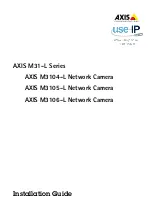
Smart Module Series
SC200K_Series_Hardware_Design 69 / 105
4.12.5. Audio Signal Design Considerations
For handheld handset and hands-free microphone, it is recommended to use the electret microphone with
dual built-in capacitors (e.g. 10 pF and 33 pF) for filtering out RF interference, thus reducing coupling TDD
noise. The 33 pF capacitor is applied for filtering out high-frequency interference when the module is
transmitting at EGSM900. Without this capacitor, TDD noise could be heard during voice calls. The 10 pF
capacitor here is used for filtering out high-frequency interference at DCS1800. Note that the resonant
frequency point of a capacitor largely depends on its material and production technique. Therefore, you
would have to discuss with vendors of the capacitor to choose the most suitable capacitor for filtering out
high-frequency noises during operation.
The severity degree of the high-frequency interference in the voice channel during GSM transmitting
largely depends on the application design. In some cases, EGSM900 TDD noise is severer; while in other
cases, DCS1800 TDD noise is more obvious. Therefore, a suitable capacitor should be selected based
on the test results. Sometimes, no RF filtering capacitor is required.
In order to decrease radio or other signal interference, RF antennas should be placed away from audio
components and audio traces. Additionally, keep power traces far away from the audio traces and do not
route them in parallel.
The differential audio traces must be routed according to the differential signal layout rule.
4.13. USB_BOOT Interface
Table 25: Pin Definition of USB_BOOT Interface
USB_BOOT is a download interface. Drive USB_BOOT down to the GND before turning on the module,
the module can enter into download mode when turned on. Then you can upgarde the firmware through
USB1.
Pin Name
Pin No.
I/O
Description
Comment
USB_BOOT
46
DI
Force the module into
download mode
Before turning on the module,
driving USB_BOOT down to GND
can enable module to enter into
download mode after turn-on.
A TVS component should be
reserved between the module and
interface for ESD protection.
















































